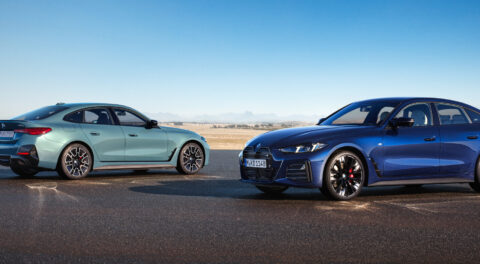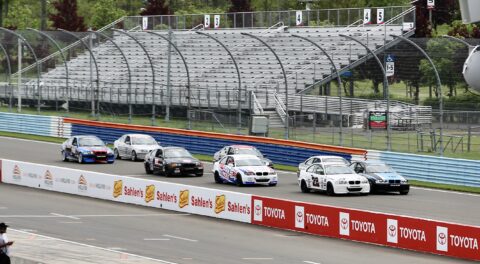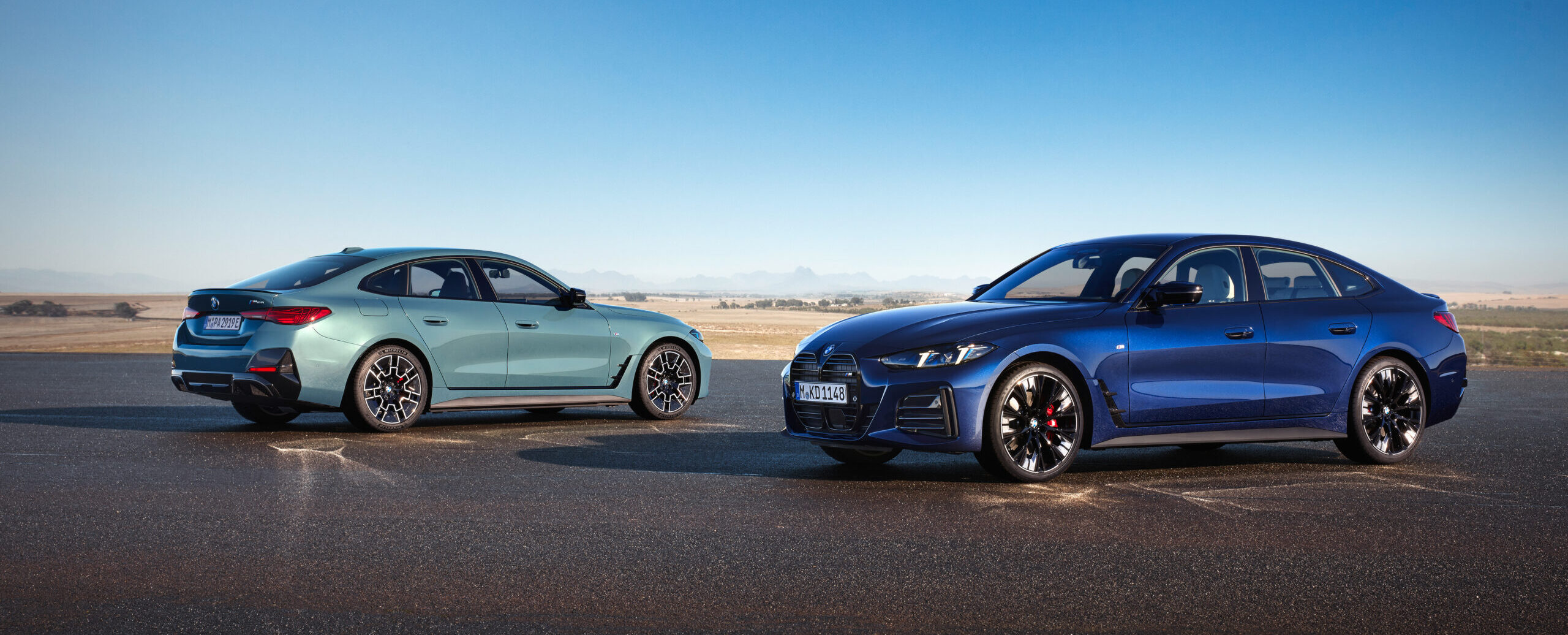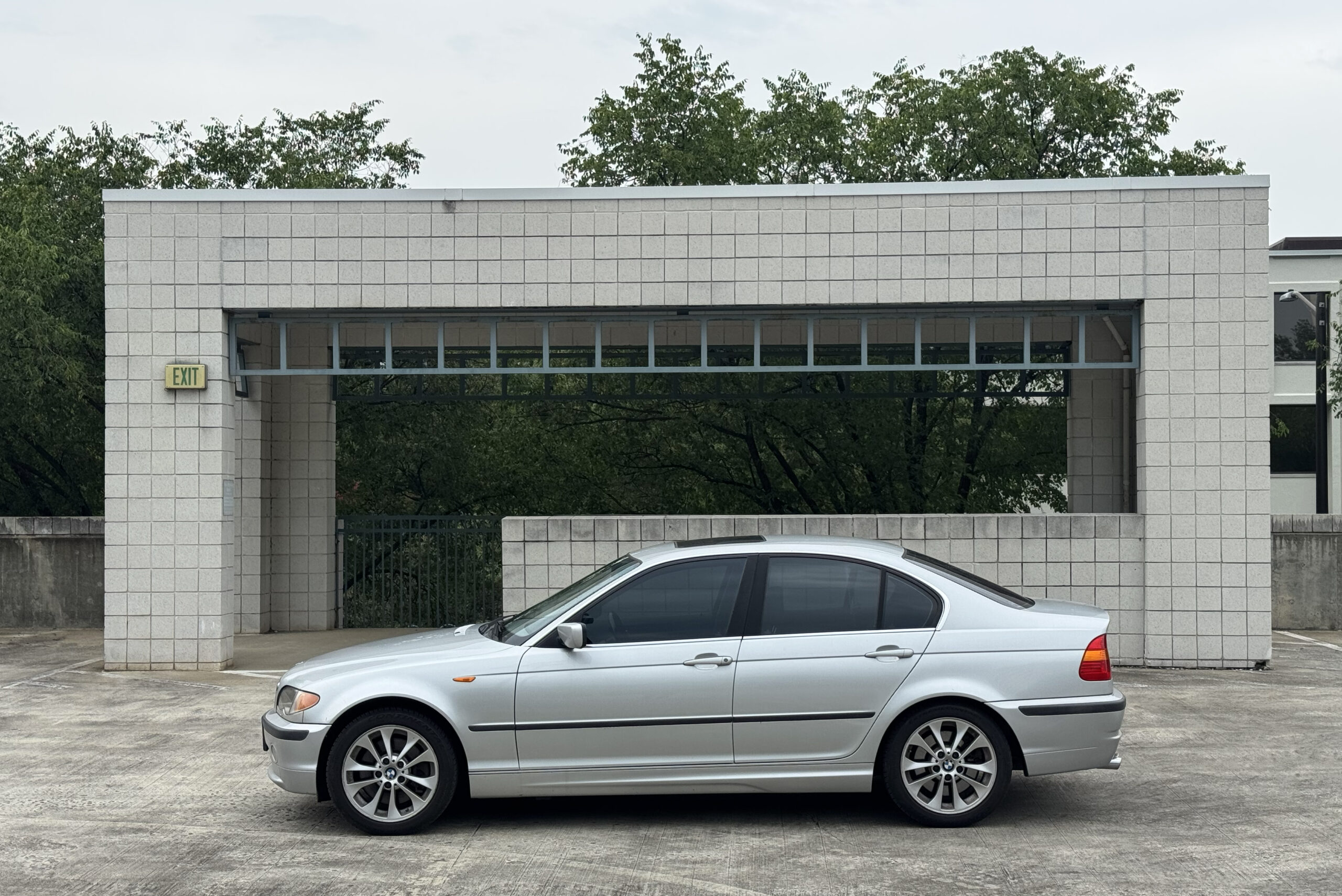
Although BMW is synonymously associated with the inline six-cylinder engine, the automaker has continuously offered a four-cylinder for over 50 years. It is these engines that have underpinned the lineup in Europe and more recently the U.S., and it would not be a stretch to say that the majority of the cars BMW currently sells are powered by four-cylinders. Despite the straight six being BMW’s core competency as far as engine designs go, with the earliest versions dating back to the prewar period and more than two dozen iterations and variants following, it was the M10-powered New Class and later the 2002 that really put BMW on the map and helped establish the company as offering sporty but economical and practical cars.
Like our other engine evolution articles (V8, V12) we regrettably can’t focus on every design in full detail. This means we have to omit diesel engines from our list, and for an engine architecture like the four-cylinder, which has been produced in many different designations over the years, we have to primarily focus on those used in U.S. market BMW models as opposed to the full range.
Although a lot has changed over the years, like fuel delivery, camshafts, and engine management, somethings have also stayed remarkably consistent. The M10 was offered (quite popularly) in a 2.0-liter displacement, the N20 came in the same size, and the B48 is exclusively available in it. The progression of power output has also been incredible, with the most potent versions of the current B48 eclipsing many of BMW’s naturally aspirated V8s, and even the first few generations of turbo six cylinder engines. Follow the story of how it all played out below.

BMW M68 Four-Cylinder (1934–1936)
Although the first engine BMW engine produced in volume was actually a four-cylinder, it was actually the 747cc Austin 7 side-valve engine under a license. This was the power plant of the Dixi DA-1, which was rebranded BMW Dixi 3/15 DA-2 when BMW acquired Fahrzeugfabrik Eisenach in late 1928. This engine would be modified to use an interesting overhead-valve cylinder head which yielded a slight increase in displacement to 788cc for the BMW 3/20 after BMW’s licensing contract with Austin expired, but the underlying architecture dates back to 1922 when the Austin 7 first hit the market. It is the BMW 309 that was powered by BMW’s first inline-four to use an in-house design (pictured above) which was internally designated M68.
Best thought of as an M78 straight-six with two cylinders removed, the M68 employs the same overhead-valve cylinder head design, but with a different bore and stroke. While early builds of the M78 actually retained the same bore and stroke as the 788cc power plant of the 3/20, continuing the tie to Austin, the bores were eventually increased to allow fitment of more crankshaft bearings. The M68 uses a long-stroke design, with a bore that’s 22mm smaller than the stroke. Displacing 845cc, output is 22 horsepower at 4,000 rpm. The 309 had a shorter production run than its six-cylinder stablemates, and it would be nearly three decades until another four-cylinder appeared in the lineup.
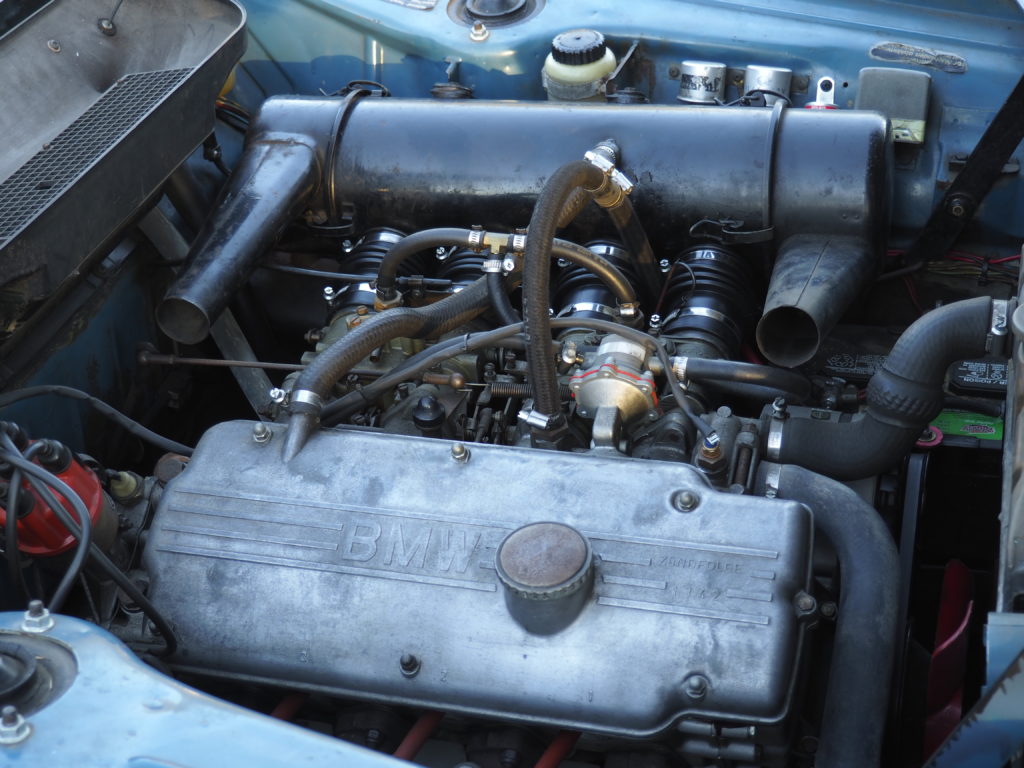
M10 (1962–1988)
The M10 engine was BMW’s first inline-four since the prewar overhead valve M68, but they clearly got something right with the single-cam, eight-valve mill. Introduced beneath the hood of the New Class model lineup in the early 1960s, the M10 was produced until 1988, and last appeared in the U.S. with the 1984 through 1985 BMW 318i. Early versions came in 1.5-, 1.6-, and 1.8-liter displacements, the latter of which would be made until the end of production, albeit in slightly different dimensions. The decade of the 1960s would not end without a 2.0-liter M10 appearing, and it is this displacement that allowed the engine to be such a success. Initially with twin carbs in the 2000CS and eventually fuel injection in the 2002tii, when properly fed, the M10 was a potent engine that could compete with twin-cam designs of the era like those from Alfa Romeo and others. The 2002tii was also a forerunner to the modern sport sedan, and much of its charm comes courtesy of the robust M10.
It’s important to note that the M10 wasn’t always referred to as such. Prior to BMW adopting its modern engine designation scheme, a simplified three-digit code was used to classify different designs and displacements. The M115 (1.5-liters) relied on a single Solex 38 PDSI carburetor and developed approximately 75 horsepower at 5,700 rpm and 87 pound-feet of torque at 3,000. The 2000CS New Class coupe used an M05 which displaced two liters with twin Solex 40 PHH carburetors supplying fuel for 120 horsepower at 5,600 rpm and 123 pound-feet of torque at 3,500. The Kugelfischer-injected version in the 2002tii offered 130 horsepower at 5,800 rpm and 131 pound-feet of torque at 4,500. The M10B18 was the last version to be used for series production, and this Bosch L-Jetronic variant developed 105 horsepower at 5,800 rpm and 107 pound-feet of torque at 4,500. All versions are over square, with some displacements having a bore twenty millimeters larger than the stroke, meaning they possess something of a rev-happy personality.
The M10 spawned a number of other developments, including but not limited to the next engine on this list. Some other interesting versions include the radial-head, four-valve Apfelbeck from the mid 1960s, the turbocharged M12 used in Formula 1 competition (a version of this engine made 1,350 horsepower, the most ever for a four-cylinder), and the M31 of the 2002 Turbo, which makes an impressive 169 horsepower.
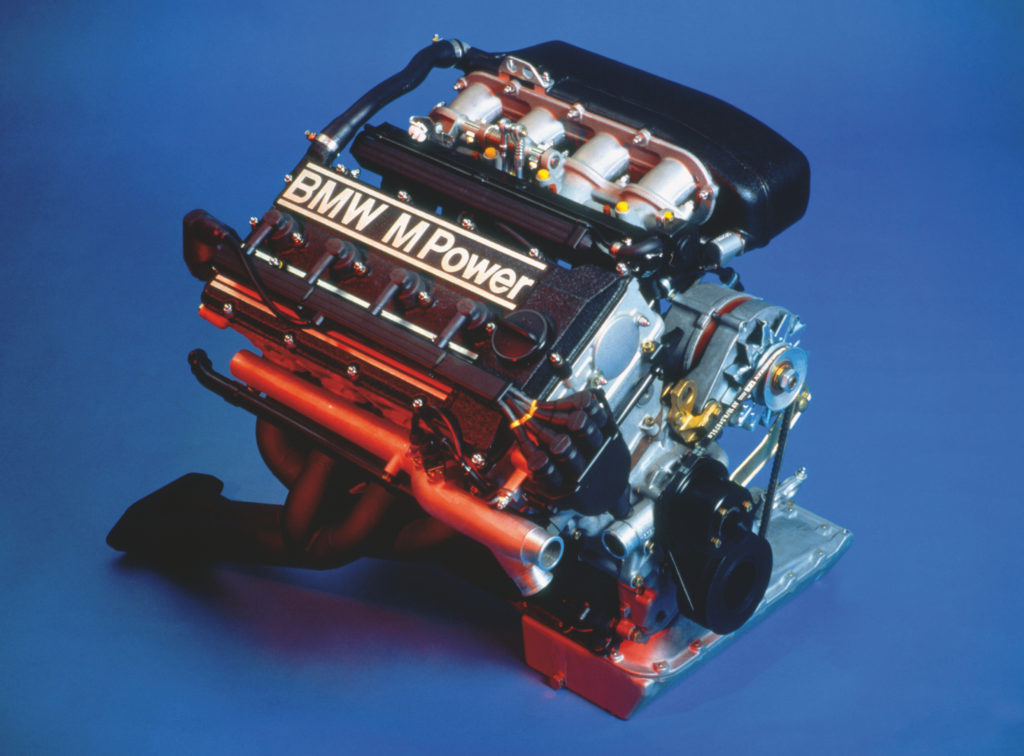
S14 (1986–1991)
The S14 is among the freshman generation of production-class M engines, and needs no introduction here as the power plant of the E30 M3. What makes the S14 such an interesting engine is its mechanical composition. Assigned its numerical designation because it took approximately two weeks to create, the S14 uses a development of the dual-overhead cam, four-valve cylinder head of the S38 and the block of the M10. Regarded as one of BMW’s most engaging engines, the power plant of the first M3 must be rung out too its redline north of 7,000 rpm to extract maximum performance, but that’s part of the engine’s charm.
The S14 was manufactured in four different displacements. The volume variant was the 2.3-liter B23 which made between 192 and 212 horsepower depending on market and specific trim, while torque ranged from 170 to 177 pound-feet. The 2.3-liter Evo 2 was developed in an effort to keep up with competition from Mercedes-Benz in the form of the 190E 2.3-16 Cosworth, and was slightly more potent with 217 horsepower and 181 pound-feet of torque in non-catalyzed form. The most potent version is the S14B25 Evo3, which was the ultimate extension of the aforementioned clash with Mercedes. The 2.5-liter makes 235 horsepower at 7,000 rpm and 177 pound-feet of torque at 4,750. The most interesting variant of the S14, however, has nothing to do with motorsport. The S14B20 was created to skirt steep tax regulations in Italy and Portugal for engines larger that two liters. All variants of the S14 are over square engines that love to rev, but the B20 takes this to the extreme with a bore of 93.4 mm and a shortened stroke of just 72.6—a difference of over 30. This version has a redline of 7,300 rpm, and develops 189 horsepower at 6,900 rpm, while torque of 155 pound-feet peaks at 4,900.

M42 and M44 (1989–1996, 1996–2000)
The M42 democratized dual overhead camshafts beyond the M engine lineup, and was among the first series production BMW engine designs to use them, with the M50 inline-six and M60 V8 following shortly thereafter. The M42 was the direct successor to the M10 in the U.S., but it’s important to remember that BMW also produced the SOHC M40 during this period, which was used extensively in other markets. The M42 first appeared in the U.S. beneath the hood of the E30 318i and 318is, before being carried forward and seeing use in the E36 318i and 318is models. The only version sold here was a 1.8-liter, which developed 138 horsepower at 6,000 rpm and 129 pound-feet of torque at 4,500.
The M42 represented a significant step forward from the M10 in a number of ways beyond its use of a twin-cam head. Instead of requiring valve adjustments like just about every other previous BMW engine, the M42 uses hydraulic lifters which are self adjusting, and Bosch Motronic digital engine management was a significant advancement over the previous Jetronic systems. This enabled the elimination of the conventional distributor-based ignition system in favor of a coil-on-plug setup. Later versions also received a variable length intake manifold, marketed by BMW as DISA. The M42 spawned a performance-oriented M version called the S42B20, but this engine was used exclusively in German Super Touring competition. As one might expect, the S42 employs individual throttle bodies, twin injectors per cylinder, and uses carbon fiber in its construction. This engine developed 300 or 315 horsepower depending on the version. The M42 was replaced by the M44 during the mid 1990s, which brought with it minor upgrades like those which were given to later versions of its predecessor, along with an increase in displacement to 1.9 liters. Like the M42 and the M40, the M44 was produced alongside the SOHC M43. Both the M42 and M44 like to rev, with a bore slightly larger than the stroke, but the engines, especially the M44B19, are nearly square.
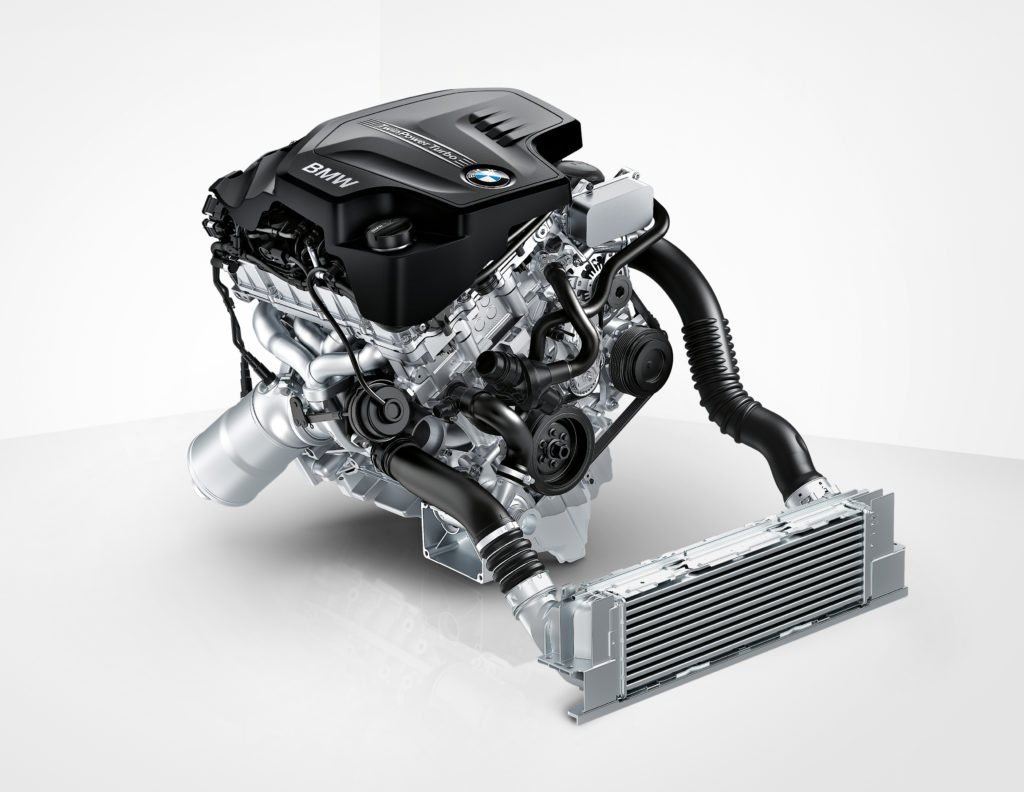
N20 (2011–2017)
After the M44-powered E36 318is and four-cylinder Z4 models signed off ahead of the launch of the exclusively six-cylinder U.S. market E46 3 Series, the BMW four-cylinder engine vanished from the North American model portfolio. It wasn’t until 2012 and the launch of the F30 3 Series that a four-cylinder engine would be offered here once again, this time in the form of the N20. To fully understand the N20 though, we must briefly mention the engines that came after the M44 and before N20. These include the N40, N42, N46, and N13. Without getting too verbose with the details, these engines continued the technological march forward. The N40 introduced double-VANOS to the four-cylinder realm, while the N42 came with Valvetronic variable valve lift, two technologies which have since permeated the engine lineup. The N46 was an incremental step that lasted over a decade, but it was the succeeding N43 that brought direct fuel injection to the table. Turbocharging arrived with the N13 engine, which was reserved for some of BMW’s most affordable models in markets outside North America. Developed by PSA (Peugeot, Citroen) and BMW, the N13 displaces just 1.6 litters, and was essentially replaced by the B38 three-cylinder, a version of which is used in the i8.
The N20 came to the U.S. for the 2012 model year, and was essentially the technological culmination of the preceding four-cylinder lineage. With double-VANOS, Valvetronic, direct-injection, and turbocharging, the N20 quickly became the base-model engine for everything from the X1 to the 5 Series. The N20 was sold in a 1.6-liter displacement, but it is the N20B20 that was sold in serious volume and produced in variations with horsepower that ranged from 154 to 241. The most powerful version develops 241 horsepower at 5,000 rpm with 258-pound-feet of torque peaking from 1,250 to 4,800. Equipped with a single twin-scroll turbocharger, the N20 boasts impressive tuning potential, but is more torque oriented than previous BMW four-cylinder engines, with an under square, long-stroke layout. The BMW N26 is the SULEV compliant version of the N20. Output is identical to that of the most potent version of the N20, and changes are largely concerned with emissions and take the form of metal fuel lines, an enlarged catalytic converter, electronic wastegate, and a fuel tank ventilation system to test for leaks. If you own a BMW 228i, 328i, or 428i that originated in California, you likely have this engine.
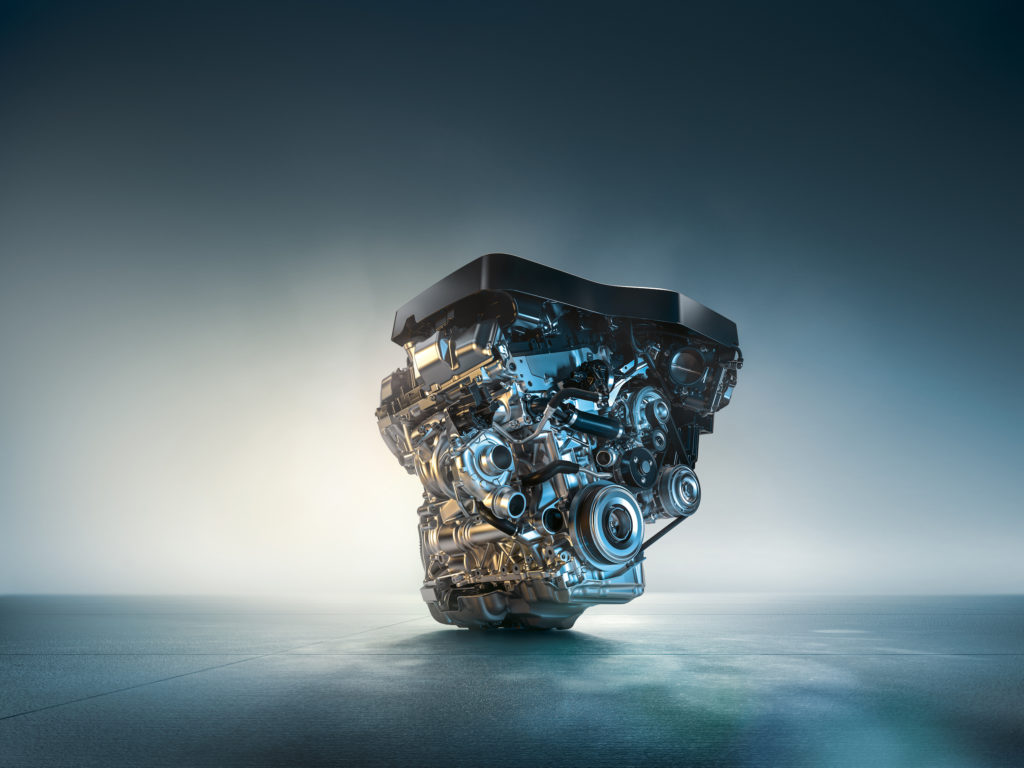
B48 (2014–Present)
When the B48 replaced the N20 partway through U.S. F30 3 Series production, it brought with it more than just incremental change. Although the B48 uses much of the same technology as the N20, such as double-VANOS, Valvetronic, and direct-injection, the B48 employs a high-strength modular design which means componentry is shared between it, the B38 three-cylinder, and the B58 six. The B48 displaces a nearly perfect 1,998 cubic centimeters, with individual cylinder displacement of almost exactly 500. It is sold in a variety of different power output levels, ranging from 181 horsepower to over 300. The most powerful variant develops 302 horsepower from 5,000 to 6,250 rpm and 332 pound-feet of torque from 1,750 to 4,500. For those keeping track, that’s more than the TwinPower turbo six-cylinder N54 and N55 engines which debuted over a decade ago, and more than BMW’s first quad-cam V8, the M60.
The B48 comes in everything from the X1 to the 5 Series, but is perhaps best enjoyed in vehicles like the X2 M35i, Z4 sDrive30i, and the upcoming M235i Gran Coupé. Consistent with the under square trend established with the N20, the B48 is another long-stroke engine, with a stroke over 12mm larger than the bore. Only on the market for the past few years, the B48 has wasted no time proving itself as a reliable and efficient, yet potent power plant which provides smoother power delivery over a more linear rev range than the N20, with reduced NVH and improved longevity as well.
The Future
As time goes on, four-cylinder engines are only going to get more and more powerful. As explained above, the B48 is already quite impressive when compared to the turbo inline-sixes of the previous generation and BMW’s first few naturally aspirated V8s, but this is just the beginning. As V12s are replaced by V8s in the most powerful performance models, and as V8s are replaced by six-cylinder engines in mid-range vehicles, the inline-four is gaining prominence at an unmatched rate. From the best selling American pickup truck to to entry-level sports cars and far beyond, the inline-four is permeating into automotive model lineups everywhere.
Competition is stiff as well. The Mercedes-Benz M133 straight-four came with 355 horsepower and 332 power-feet of torque in 2013, and was updated with 375 horsepower and 350 pound-feet just a short time later in 2015. Development hasn’t stopped of course, and the M133 has since been replaced by the M139. This new two-liter four has identical displacement, but features a flow-optimized cylinder head and exhaust manifold arrangement, which helps net 382 horsepower and 354 pound-feet of torque in its base model, while AMG S models will come with a version developing 416 horsepower and 369 pound-feet. Things get peaky with the boost turned up so high, something with more cylinders will always be smoother, and the M139 relies on a complex dual ignition system, but it will be interesting to see how BMW can compete with its current modular designs.—Alex Tock
[Photos courtesy Alex Tock, BMW AG.]

